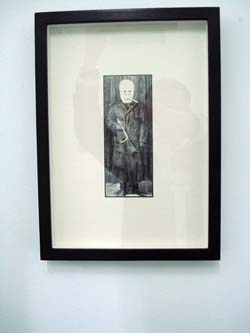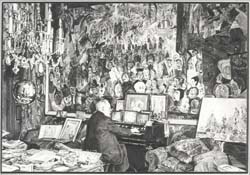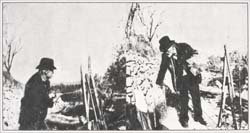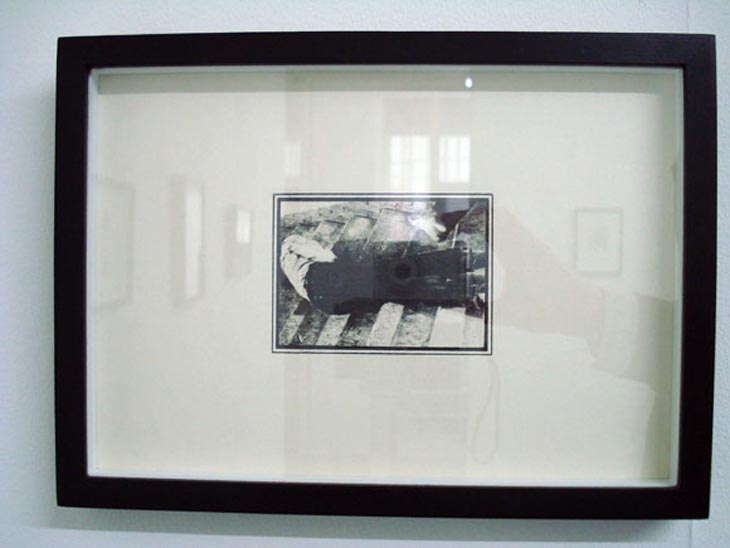
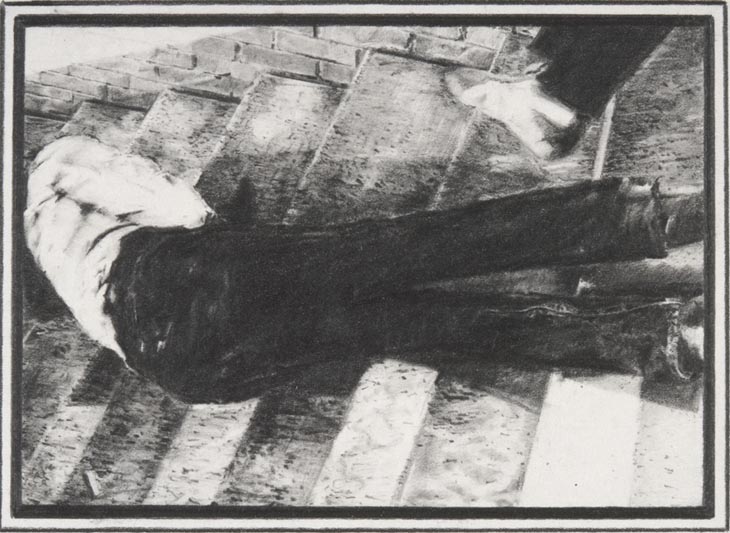
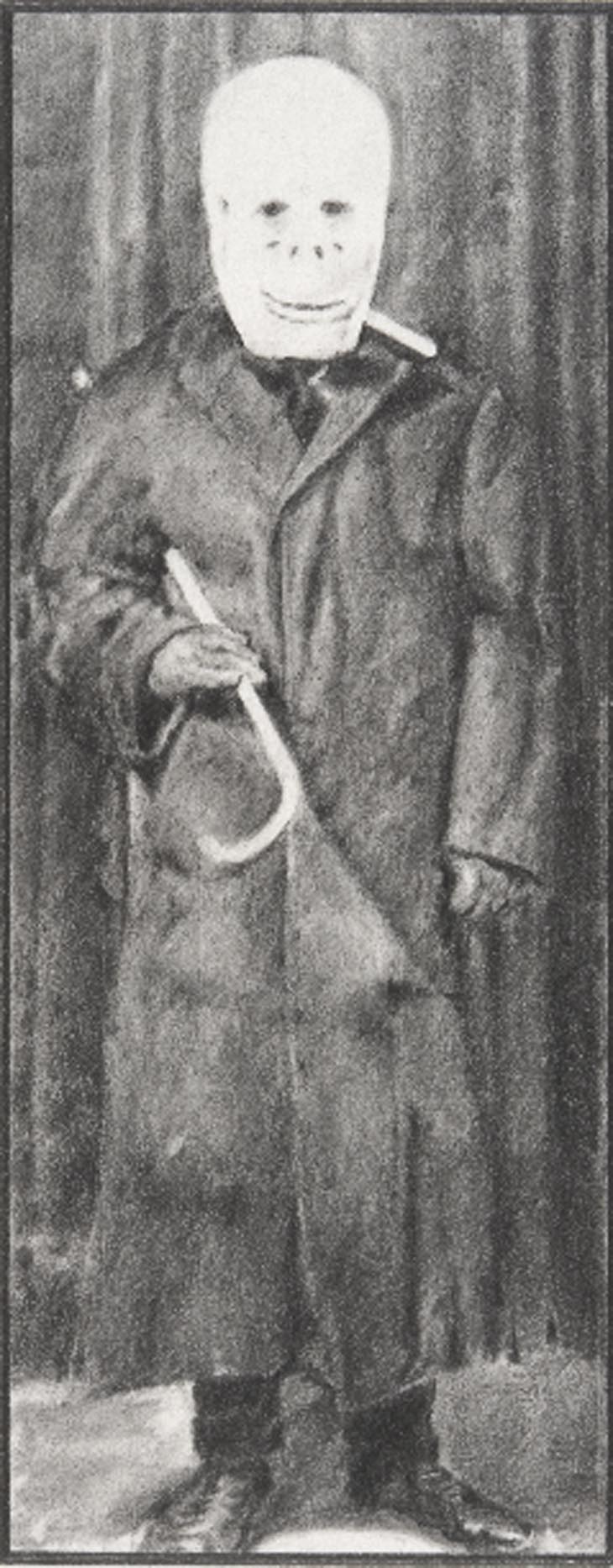

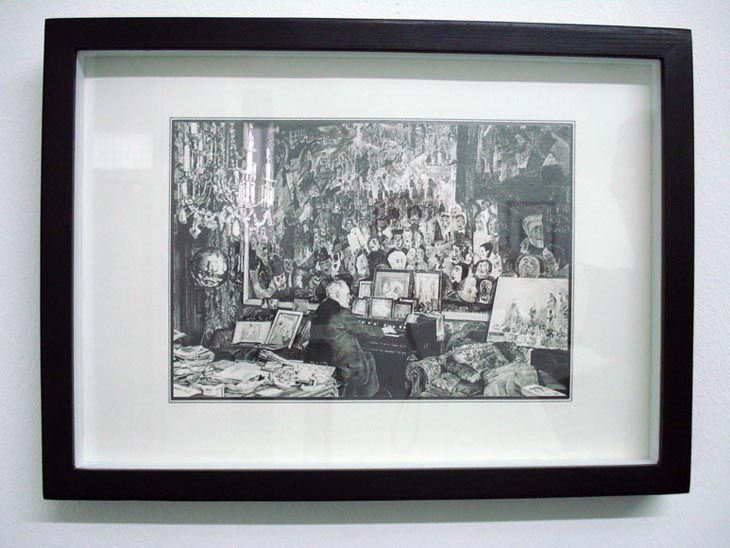

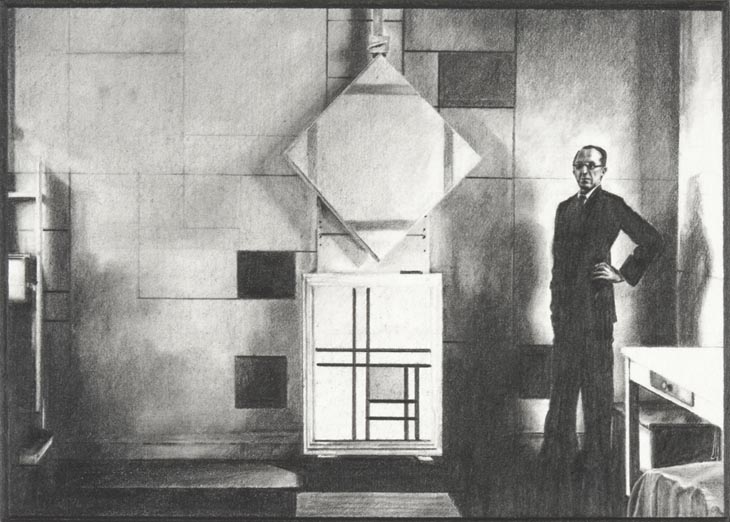

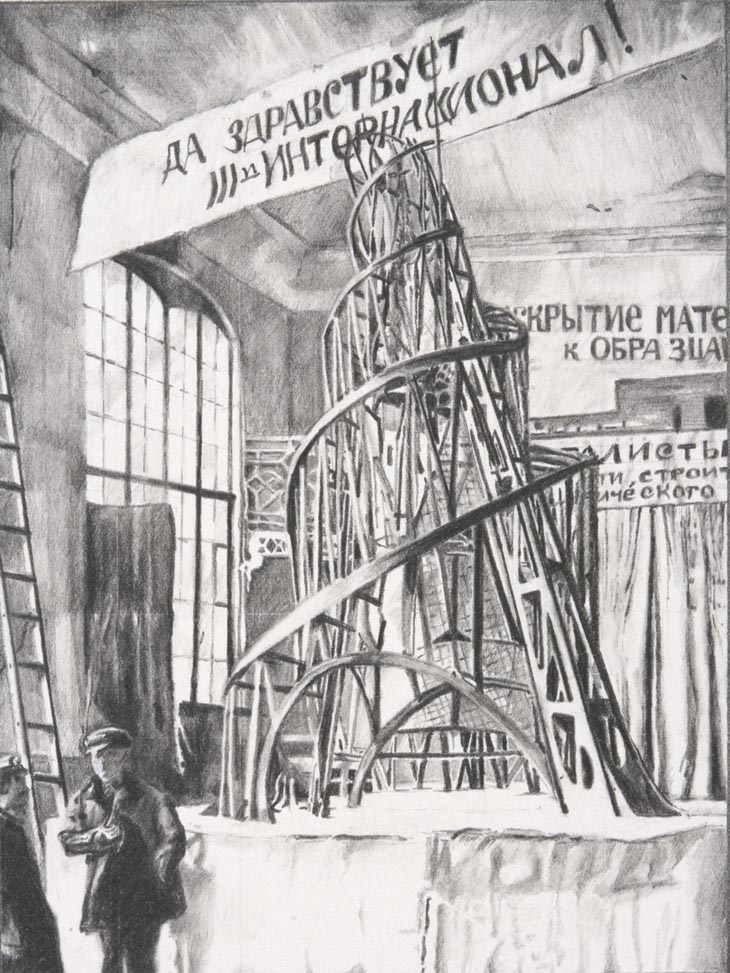
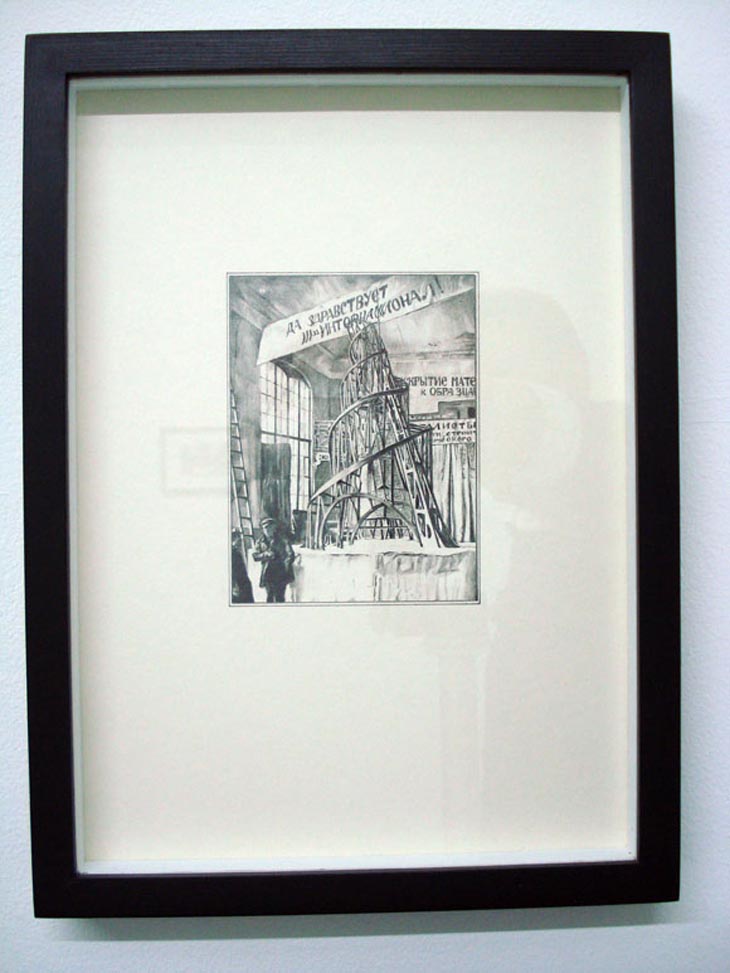
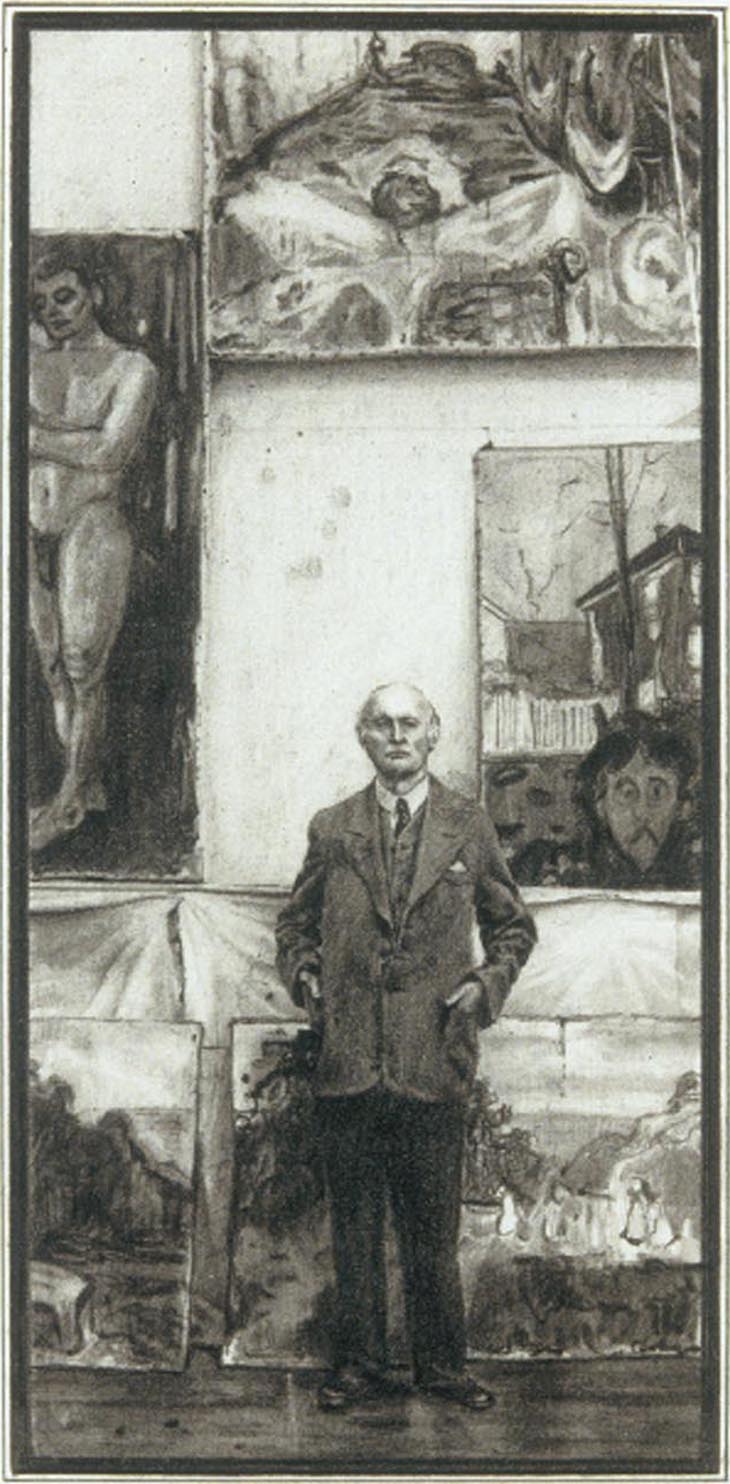
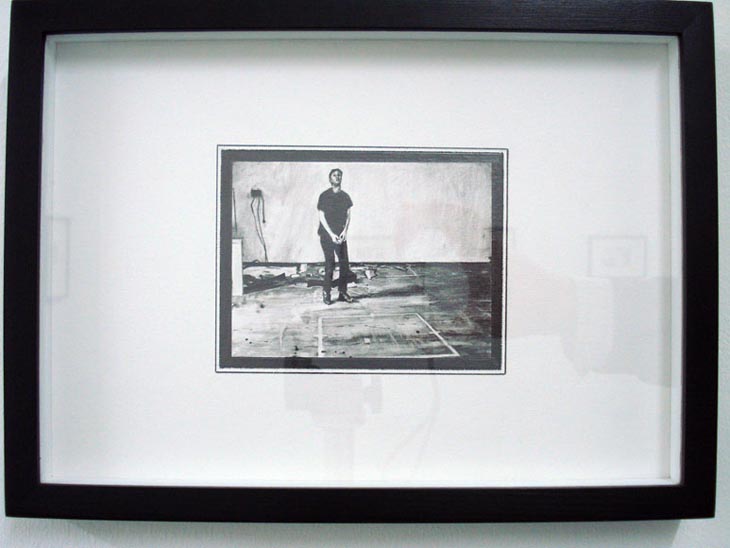
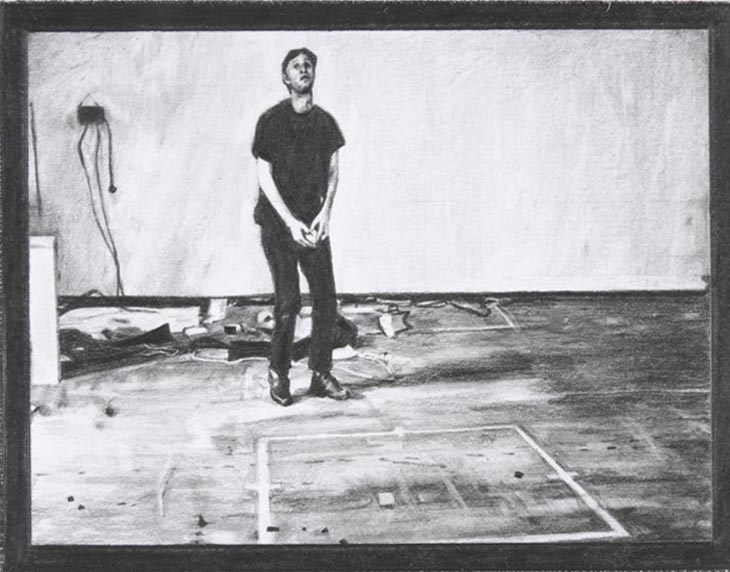
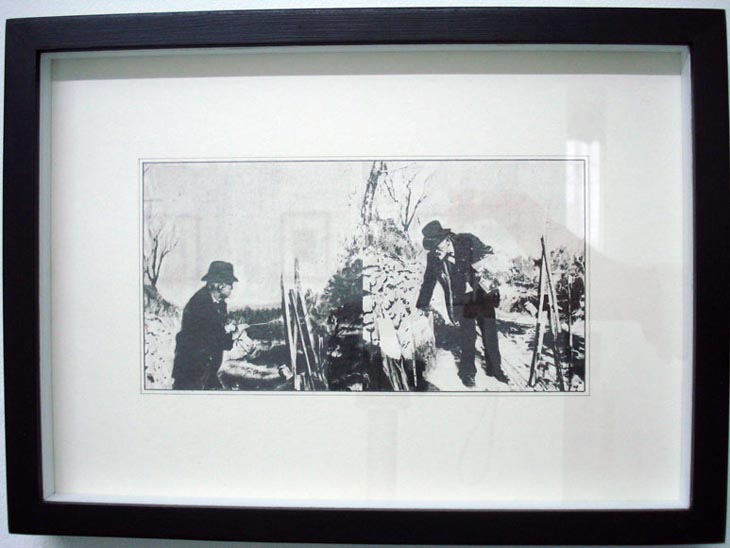

ARTIST:
Alan Brooks
“The photograph I used for Burden is a bad grainy reproduction,†says Brooks, “and I tried to capture this in the way that I drew it.†In his performances in the 1970s Chris Burden had himself shot, electrocuted, and once even crucified to a Volkswagen. This image shows Burden being kicked down a flight of stairs at the 1974 Basel Art Fair. Brooks’s drawings engage with the mechanics of how an artist’s mythology is created. In 1974 it would have been possible to take a colour photograph or use high speed film. Instead the documentation of this performance is in black and white and the movement is blurred; it looks something like crime photo evidence. We’ve come to understand this aesthetic as ‘historically important’ and ‘impersonal’. As much as they represent Brooks’s favourite artists, these drawings also expose how we understand art – not just for what it is, but through how it’s conveyed in media.
“When I was at art college I began collecting pictures of artists working in their studio or making their artworks. This collection became an addendum to my interest in the artists’ work, a research method for the development of my own practice. I collected the images from magazines, old books, newspapers, postcards, anywhere I could find them. But at the time they weren’t collected with any particular purpose in mind. About five years ago I was sifting through this archive of images and it struck me that the reasons I had been originally fascinated in say, Ensor or Dix, had become lost in time. Dix is a portrait of the German painter Otto Dix, who is well known for his gruesome depictions of WWI violence and satirical images of life in the Weimar Republic.
James Ensor is renowned for his macabre crowd scenes which feature people wearing masks; Brooks pictures the artist in his studio playing the organ like an operatic phantom beneath his 1889 masterpiece Christ’s Triumphant Entry Into Brussels. Brooks describes his drawings: “They’re quite small and have a feathery, ethereal quality. Because they’re all mediated through old photos and postcards, which are often worn or battered, the blemishes come through in the drawing giving the image another layer of meaning. I make them with a type of magnifying glass called an Optivisor; it slips over your head like the type conservators use. This allows me to draw all the minute details and textures of the photographs.â€
Brooks’s portrait of Piet Mondrian was drawn from a photo taken in 1933 at Mondrian’s studio in Paris. This image of Mondrian seems strangely contemporary as it is the type of picture we’d expect to see in a tabloid magazine today: it’s not just the artist or his work which is of interest, but his lifestyle. Mondrian’s working space is like a temple to modernity, reinforcing the glamorous image of a modern master. Artists often make reference to art historical works, but by drawing the artists themselves Brooks tries to connect to and understand this history in a more personal way: “I’m not really interested in the notion of the artist as superstar in these images but in their more personal struggles as artists, making stuff in the private confines of their studios or performance spaces.â€
The idea of the ever-changing ‘ins’ and ‘outs’ of art world fashion is key to Brooks’s drawings: they’re a bit like an embarrassing confession, akin to publishing photos of yourself in your teenage outfits and haircuts. Brooks revisits these moments fondly and through his laborious process rediscovers the value in what now seems the overly familiar or cliché. He re-encounters the things which initially excited him and made him want to become an artist in the first place. This image shows Vladimir Tatlin with his 1917 design for The Monument to the Third International.
“It’s interesting to think about my work in relation to historical paintings of salons that pictured art exhibitions or collections, that tradition of artists painting other artists’ paintings. Many of the photographs I work from are very posed and funny. Dix is just standing there on his own with a weird mask thing on looking out of it, but Mondrian and Munch are paraded in front of their work showing it off. By making those paintings it’s a way to get to know the artists a bit.†For this drawing Brooks was challenged to recreate Edvard Munch’s expressionistic paintings using only a pencil. Because they’ve been rendered with photorealist clarity, the canvases in the background seem extra primitive and surreal, and stand in stark contrast to the pristinely drawn figure.
“Looking back through the collection of images I became aware that the artists’ positions in an art historical sense were constantly in flux. It was interesting how certain artists came in and out of fashion. It’s not linear and obviously all artists have their own favourites but there is a general fashion to who is hot and who is not from art history: Cezanne no, Nauman yes. There was a very democratic idea behind this piece of work in that it made all the artists equal. I’m not saying one is better, more interesting or cooler than another. As an art student you look at thousands of artists, you start with say Cezanne or Picasso, and move on from there, constantly adding to this compendium of images and influences throughout your career.†Bruce Nauman is pictured here on the set of his 1968 performance Bouncing Two Balls Between the Floor and Ceiling with Changing Rhythms.
“This is an image of Cezanne outside painting in a field with his easel; the photograph was badly damaged and this comes through in the drawing.†There is an idea in photography that every time an image is reproduced it becomes degraded and further removed from the original. This scene seems more recognisable from Cezanne’s landscape paintings than as an actual place; the rock wall to the left appears strangely cubist. The image’s repetition is reminiscent of Warhol’s screen prints, which questioned ideas about originality. By making a handmade reproduction of a mass reproduced image, Brooks adds his own layer of interpretation and factual distance. Though the picture is of Cezanne, its subject becomes Brooks’s own fascination, the imprinting of his own marks and gestures on the record of history.



